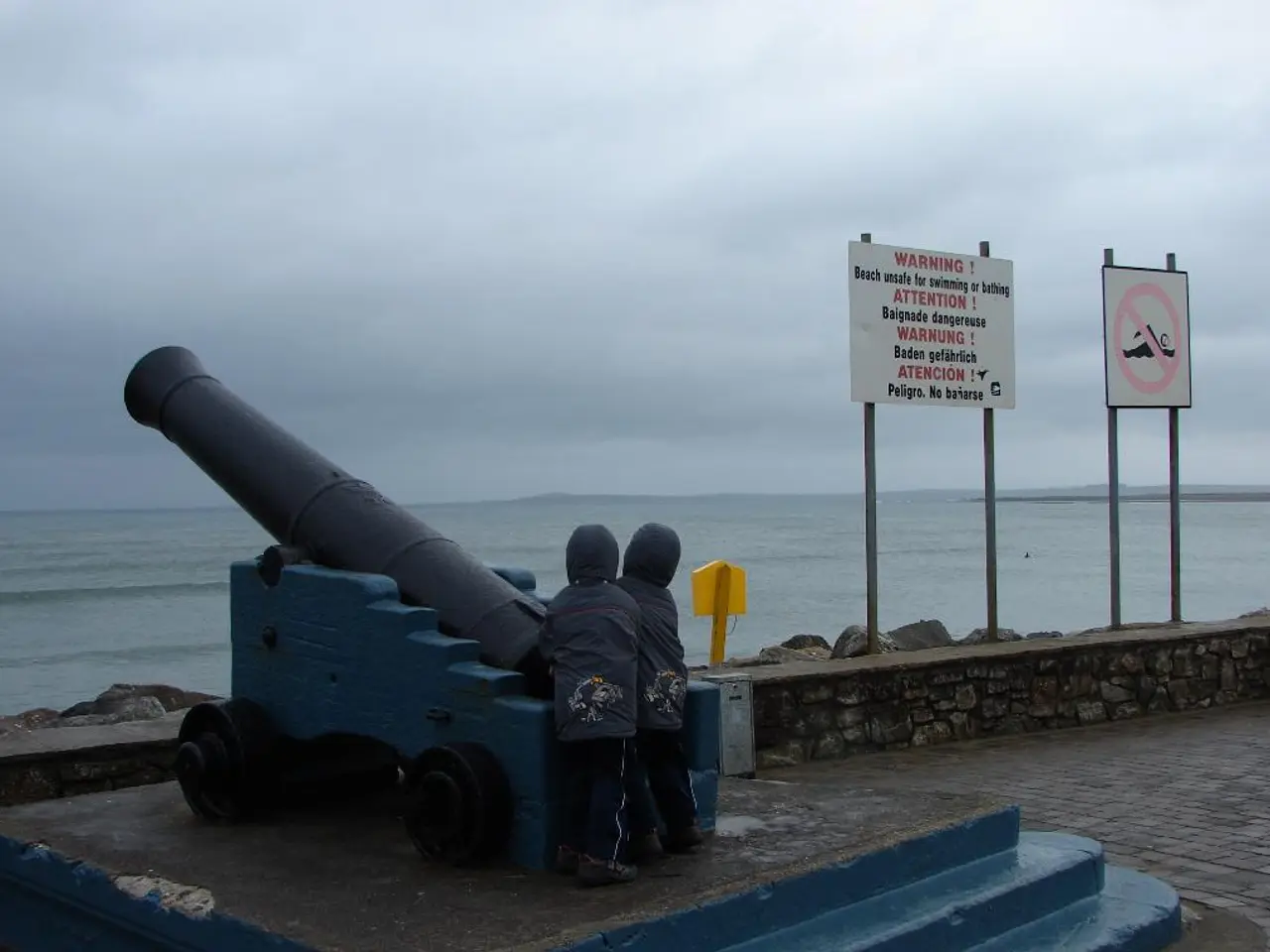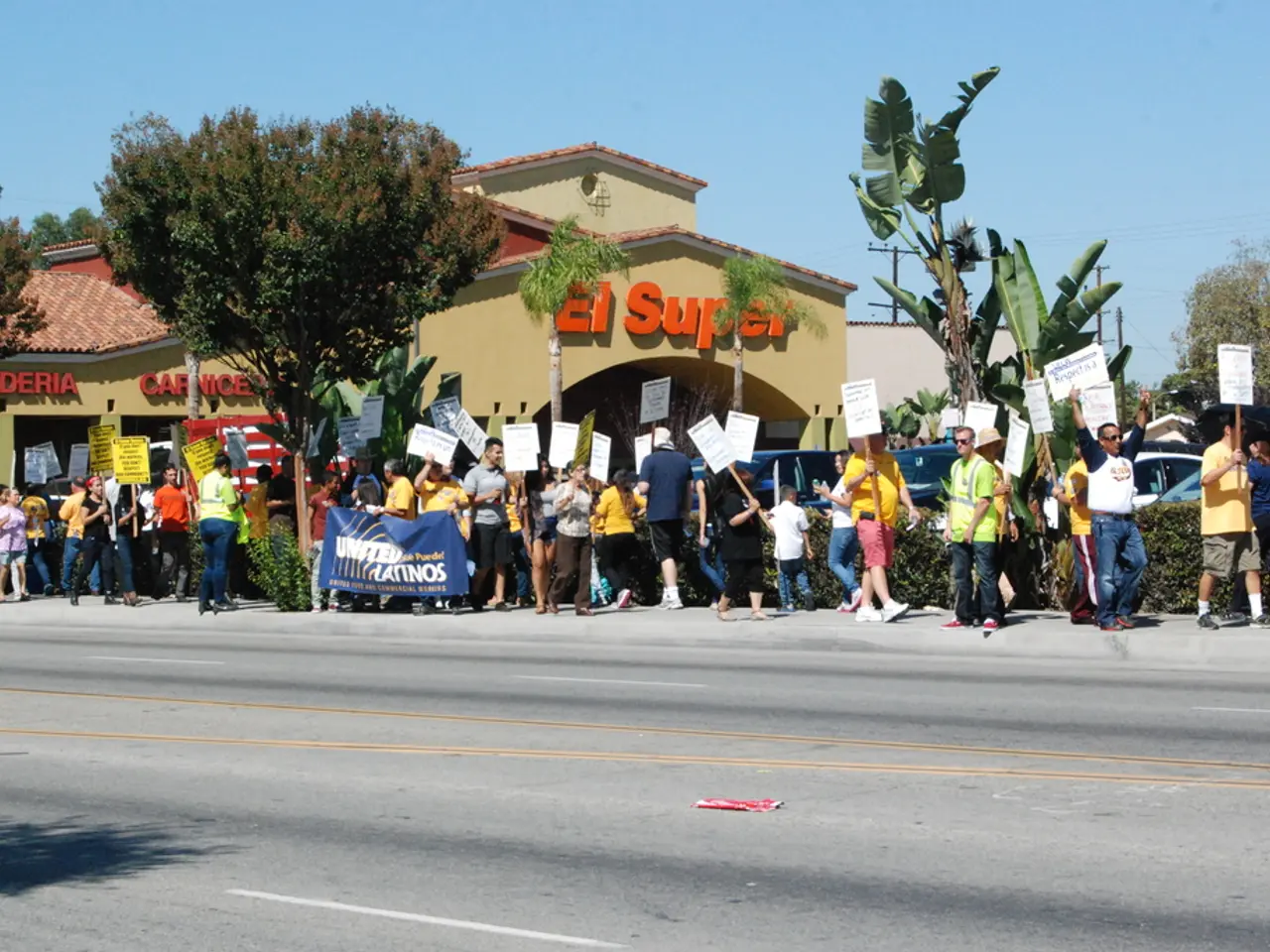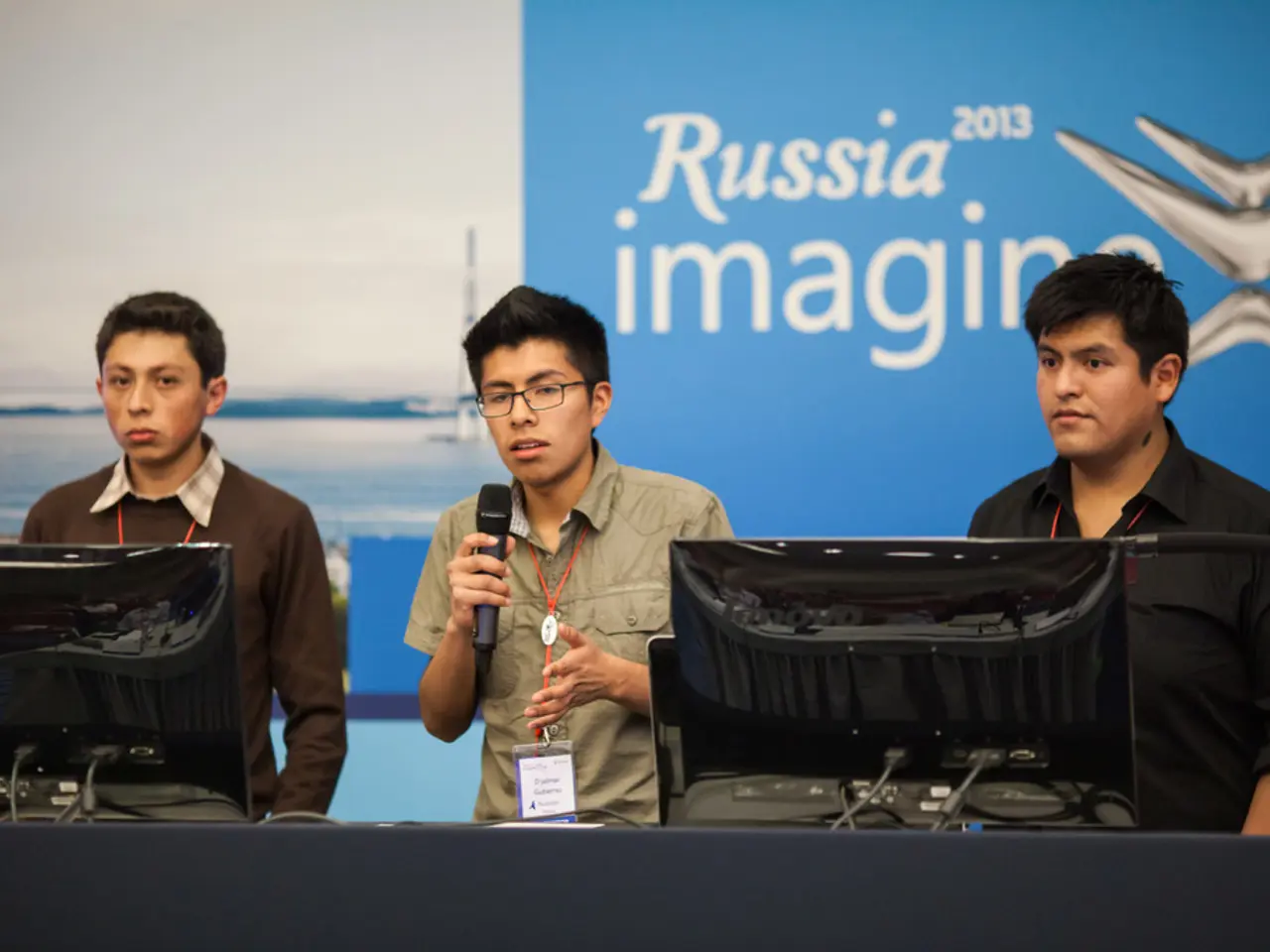Intense Drone Attack on Zelensky's Hometown Instigated by Russia, as Per Ukrainian Authorities' Reports
As the conflict between Russia and Ukraine continues unabated, recent developments have highlighted a surge in drone and missile attacks, diplomatic tensions, and territorial gains for Russia.
On the night of July 3-4, Russian forces launched a record-breaking barrage involving 539 drones (including decoys) and 11 missiles, targeting various Ukrainian regions, especially Kyiv. This attack resulted in three civilian deaths and over 30 wounded in Kyiv, with significant damage to infrastructure including residential buildings, railway systems, schools, medical facilities, and even the Polish Embassy in Kyiv’s historic center.
Earlier in July, Russia also conducted at least 35 long-range missile and drone strikes across areas including Ivano-Frankivsk, Khmelnytskyi, Lviv, and Ternopil. One particularly deadly strike hit a military recruitment center in Poltava, killing two and injuring 59 people. These massive strikes are part of a pattern with record-setting single-day barrages noted on both July 4 (550 projectiles) and July 9 (741 projectiles), indicating escalation in Russia’s air and missile campaign despite political setbacks.
Russia's military efforts are focused on multiple axes: pushing back Ukrainian forces near the Russian border areas, consolidating gains in eastern Ukraine (especially Luhansk, Donetsk, and advancing into Dnipropetovsk Oblast), and conducting offensive and supportive strikes using air, missile, and drone campaigns. Between early and mid-July, Russia's occupied territory increased by about 61 square miles, more than tripling the previous week’s rate, bringing total Russian-controlled land to over 114,000 square kilometers.
Diplomatic efforts led by the United States under former President Donald Trump, who brokered a NATO weapons support deal to Ukraine and threatened stiff penalties on Russia for peace negotiations, have so far failed to produce a ceasefire. Russia has categorically rejected calls for a ceasefire within 50 days, calling Trump's ultimatum "unacceptable" and insisting military operations will continue until Russia’s objectives are met, showing no public signs of negotiating peace.
In response, Trump announced that Ukraine will receive Patriot missile systems via NATO as part of a new package of US weaponry. However, Russia is prepared to proceed with the invasion, dismissing these diplomatic efforts. Trump appeared angry that his overtures on ending the war have been mostly ignored in Moscow.
Meanwhile, European foreign ministers, including the EU's foreign affairs chief Kaja Kallas, welcomed Trump's announcement of additional US weaponry for Ukraine. Politicians also approved increased funding for defense equipment and machinery. Ukraine's Air Force intercepted or disabled at least 345 of the drones launched by Russia.
The attack in Kryvyi Rih, the hometown of Ukrainian President Volodymyr Zelensky, sparked several fires, left parts of the city without electricity and water, and wounded 15 people. Members of parliament voted to spend an additional 400 billion Ukrainian hryvnia ($9.6 million) on security forces.
As the conflict remains highly volatile, the situation as of mid-July 2025 reflects ongoing high-intensity warfare combined with strained international attempts at mediation. The Kremlin spokesperson, Dmitry Peskov, stated that Moscow is monitoring Western long-range missile deliveries to Ukraine "very closely." Peskov warned that such decisions made in Washington, NATO countries, and Brussels are perceived by the Ukrainian side not as a signal for peace, but as a signal to continue the conflict.
This story has been updated with additional developments.
- The escalating war-and-conflicts between Russia and Ukraine have garnered worldwide attention, with the recent surge in missile and drone attacks particularly affecting regions in Europe such as Kyiv.
- Amidst the political tensions and general news about the ongoing conflict, European foreign ministers have approved increased funding for defense equipment and machinery, showing their support for Ukraine.







